10 Aquarium Fish Known For Killing Their Tank Mates
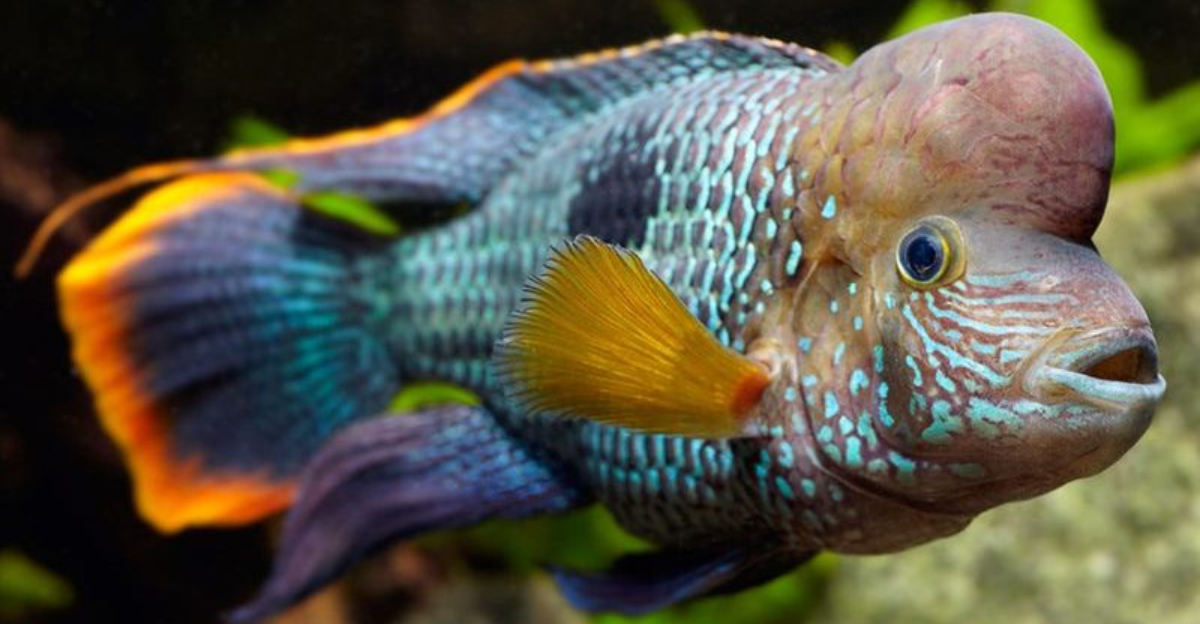
Setting up a beautiful aquarium is a rewarding hobby, but not all fish play nicely together. Some aquarium species have earned notorious reputations for their aggressive tendencies and territorial behaviors.
When these fish feel threatened or crowded, they can become extremely aggressive and even deadly to their tank mates. Understanding which fish species might turn your peaceful underwater community into a battleground is essential knowledge for any aquarium enthusiast.
1. Oscar Fish – The Territorial Tyrant
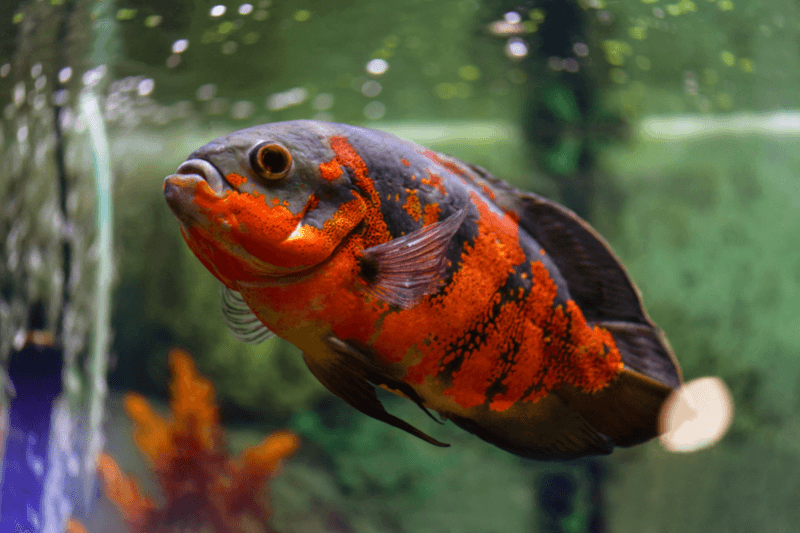
Oscars transform from cute juveniles into 12-inch territorial monsters that won’t hesitate to attack smaller fish. Their powerful jaws can easily injure or kill smaller tank mates, especially during feeding time when their predatory instincts kick into high gear.
Native to South American waters, these cichlids are highly intelligent but notoriously possessive about their space. Many owners have witnessed their Oscars systematically hunting down and eliminating smaller fish one by one.
Despite their aggressive reputation, Oscars form strong bonds with their owners and can recognize them at feeding time – making them paradoxically both beloved pets and feared predators in the aquarium world.
2. Red Devil Cichlid – Fiery And Ferocious
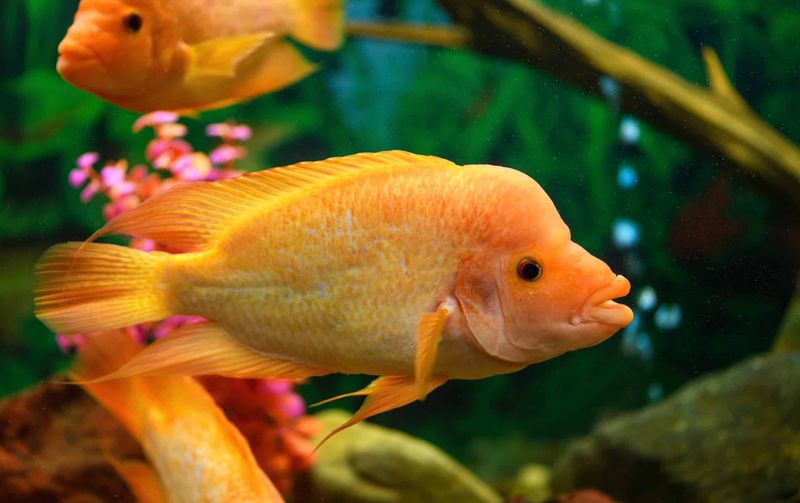
True to their name, Red Devil Cichlids bring hellish conditions to community tanks with their extreme aggression. Growing up to 15 inches long, these Central American natives are infamous for their habit of killing not just small fish but even similarly-sized tank mates.
Their territorial rage extends to rearranging the entire tank, uprooting plants, and moving decorations to suit their preferences. Aquarists often report these fish charging at the glass when people approach the tank.
Female Red Devils typically show less aggression than males, but both sexes become particularly violent during breeding seasons when they’ll defend their chosen territory to the death.
3. Tiger Barb – The Schooling Bully
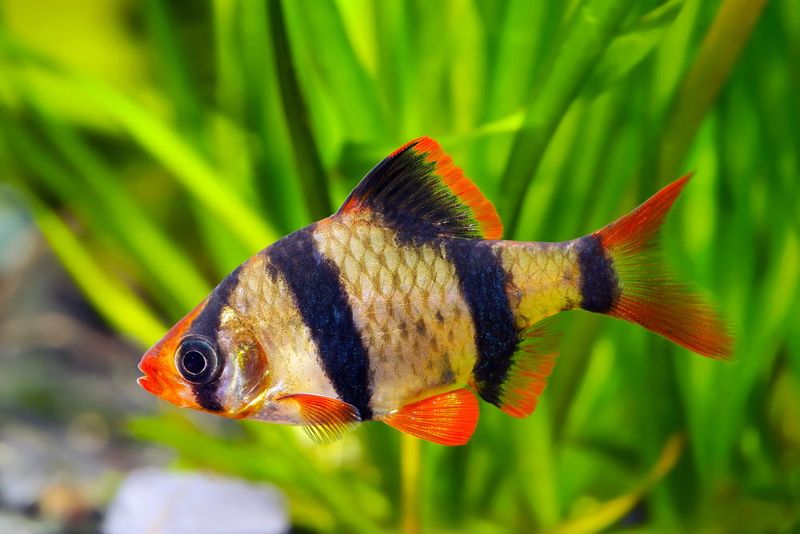
Don’t let their small size fool you – Tiger Barbs are notorious fin-nippers that can torment and eventually kill long-finned species like Bettas and Angelfish. These striped terrors operate in groups, taking turns to harass their victims until stress or infections claim their lives.
The problem worsens when kept in small groups of less than six, as they concentrate their bullying on tank mates instead of establishing their natural hierarchy. Their quick, darting movements make them difficult targets for slower fish to avoid.
Many aquarists are shocked when these seemingly innocent fish transform their peaceful community tank into a stress-filled environment where other fish hide constantly, refuse to eat, and eventually succumb.
4. Wolf Cichlid – The Apex Predator
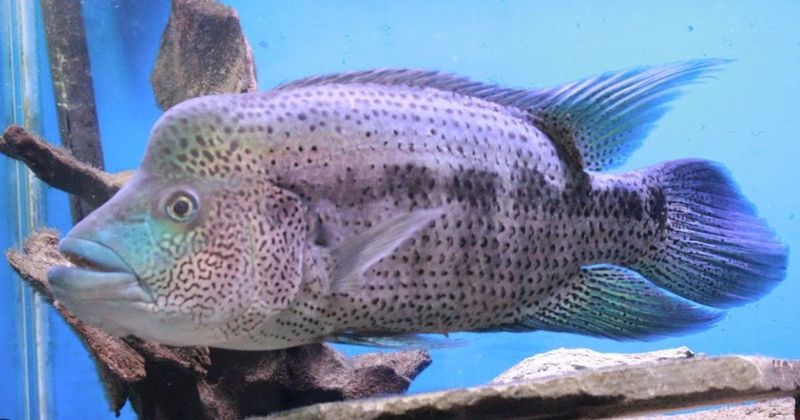
Wolf Cichlids (Parachromis dovii) are essentially freshwater sharks, growing over 24 inches and possessing both the size and temperament to kill virtually any tank mate. These Central American monsters have been observed hunting down and consuming fish half their own size.
Their hunting strategy involves relentless pursuit, cornering prey against tank walls before delivering powerful, bone-crushing bites. Even large, aggressive cichlids are no match for an adult Wolf Cichlid’s raw power and predatory drive.
Experienced aquarists warn that these fish don’t merely kill out of territorial disputes – they actively hunt for sport and food, making them perhaps the most dangerous freshwater aquarium fish available to hobbyists.
5. Flowerhorn Cichlid – Beautiful But Brutal
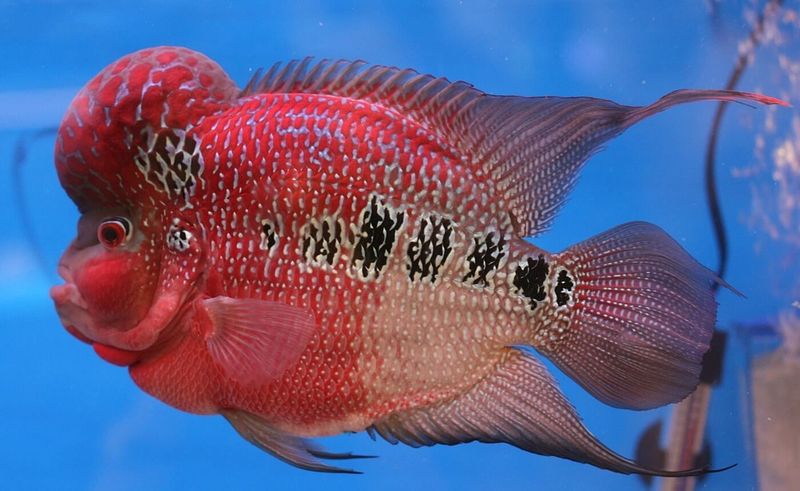
Flowerhorns, with their distinctive head humps and vibrant colors, are man-made hybrids specifically bred for aggression in Asian fish fighting contests. Their artificial origin has eliminated natural social behaviors, creating a fish that views everything as either a threat or prey.
These cichlids attack with surprising tactics – ramming tank mates with their nuchal humps (head protrusions) before using their powerful jaws to inflict fatal wounds. Their aggression extends to objects outside the tank; they’ve been known to attack cleaning tools and even owners’ hands.
Particularly problematic is their unpredictable nature – a Flowerhorn might peacefully coexist with tank mates for months before suddenly turning violent without apparent provocation.
6. Jaguar Cichlid – The Stealthy Assassin
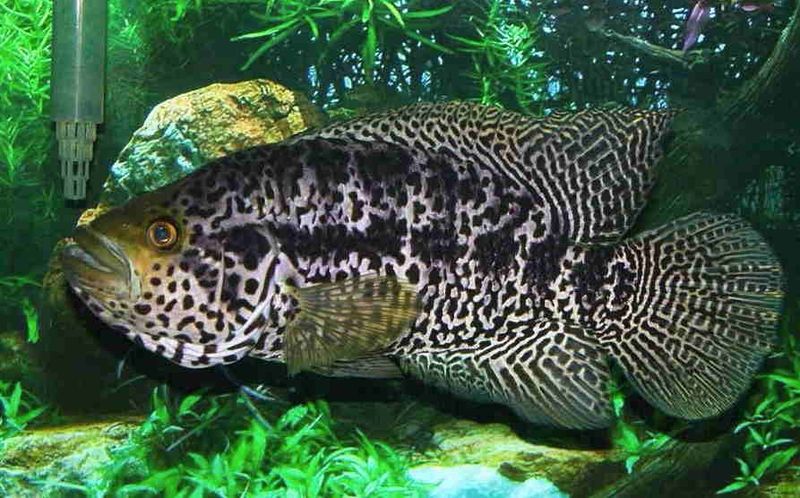
Jaguar Cichlids earn their name not just from their spotted pattern but from their hunting style – patient stalking followed by explosive attacks. These Central American predators grow to 16 inches and possess intelligence that makes their killing efficiency particularly frightening.
Unlike some aggressive fish that telegraph their intentions, Jaguars appear calm before suddenly lunging at victims with shocking speed. Their powerful jaws can decapitate smaller fish with a single bite, while larger victims suffer torn fins and puncture wounds that lead to fatal infections.
Particularly disturbing is their habit of guarding killed tank mates, preventing other fish from scavenging and maintaining exclusive “rights” to their victims – behavior rarely seen in aquarium species.
7. Convict Cichlid – Small But Deadly
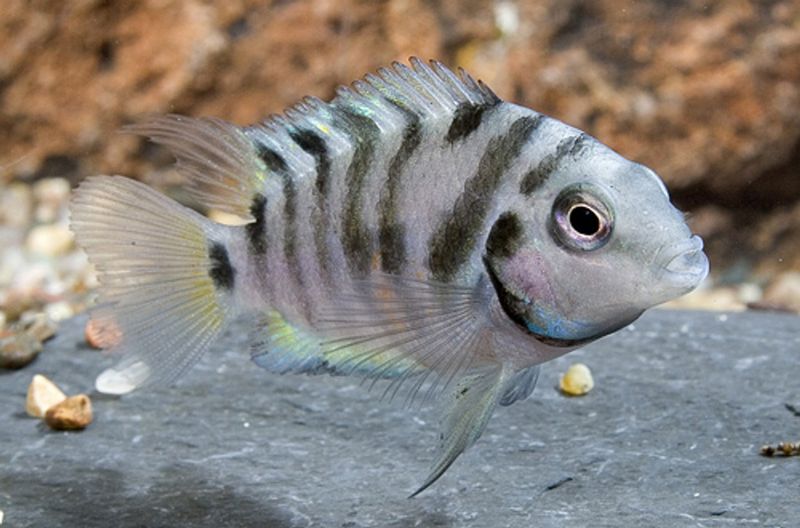
Convict Cichlids prove that deadly aggression comes in small packages. Rarely exceeding 6 inches, these black-and-white striped terrors become particularly lethal during breeding, when pairs clear entire tanks of other inhabitants regardless of size.
Their strength lies in teamwork – breeding pairs coordinate attacks from different angles, trapping larger fish in corners before inflicting damage to gills and eyes. Their small size allows them to pursue fleeing fish into tight spaces where larger aggressors can’t follow.
Most shocking is their willingness to attack fish many times their size – there are documented cases of Convict pairs killing Oscar fish three times their length through persistent harassment and strategic attacks on vulnerable areas.
8. Piranha – The Infamous Shoal Hunter
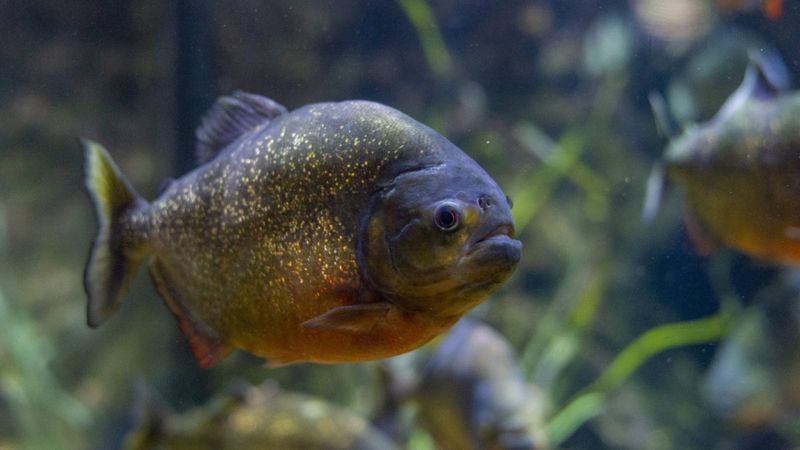
While their reputation exceeds reality, Red-Bellied Piranhas remain legitimate tank mate killers when kept in proper shoals of 5+ specimens. Their coordinated hunting behavior activates when they detect weakness, stress, or blood in the water.
Unlike solitary aggressors, piranhas attack as a synchronized unit, each taking bites from the same area until they reach vital organs. Their specialized jaws contain triangular teeth that slice rather than crush, causing wounds that continue bleeding after the initial attack.
Most concerning for aquarists is their unpredictable trigger threshold – a piranha shoal might ignore tank mates for months before suddenly decimating the entire community overnight when conditions like water quality or feeding schedules change.
9. Green Terror Cichlid – The Psychological Warfare Expert
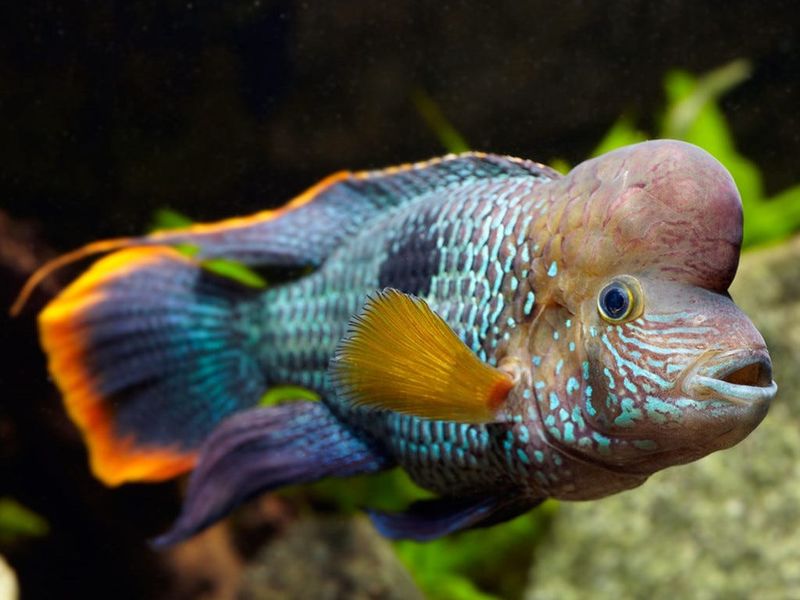
Green Terrors employ a unique combination of physical and psychological tactics to eliminate tank mates. Their iridescent blue-green bodies flash brilliantly during displays that precede violent attacks, literally terrifying victims into stress-induced illness.
These South American cichlids establish dominance by targeting the weakest fish first, then methodically working their way up the hierarchy. Their preferred attack method involves relentless chasing that prevents victims from eating or resting, leading to eventual collapse from exhaustion.
Female Green Terrors become particularly deadly when guarding eggs, developing an aggression level that can surpass even larger male specimens. Their maternal instinct transforms them into tireless sentinels that will attack anything moving within several feet of their brood.
10. Betta Fish – The Deceptive Beauty
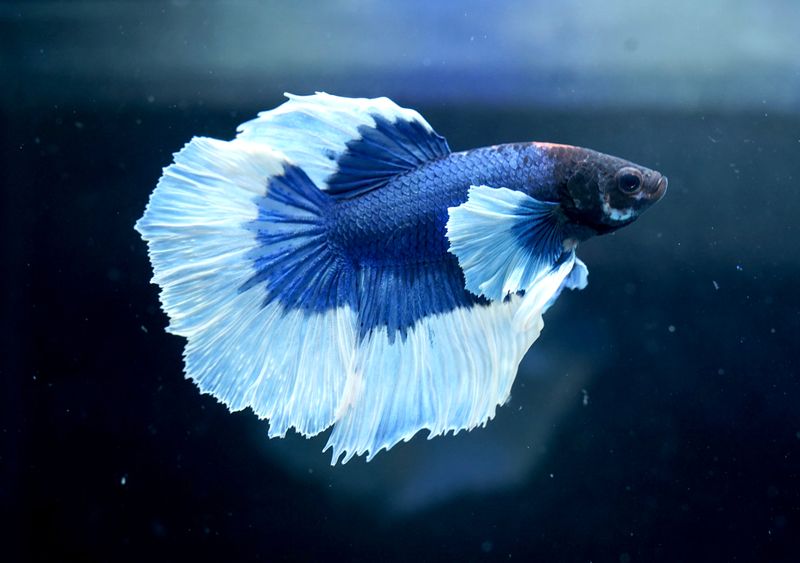
Male Bettas, marketed as elegant “Siamese Fighting Fish,” have been selectively bred for centuries specifically to kill other male Bettas. Their aggression extends beyond their own species – they frequently attack any fish with colorful or flowing fins that trigger their territorial response.
Their specialized fighting techniques include gill flaring to appear larger, followed by rapid darting attacks targeting fins and eyes. The persistent harassment continues until the victim succumbs to stress, starvation, or direct injuries.
What makes Bettas particularly dangerous is their common misrepresentation as community fish. Countless new hobbyists have witnessed their peaceful community tank turn deadly after adding these beautiful but lethal fighters, whose aggression is often dismissed until it’s too late.






